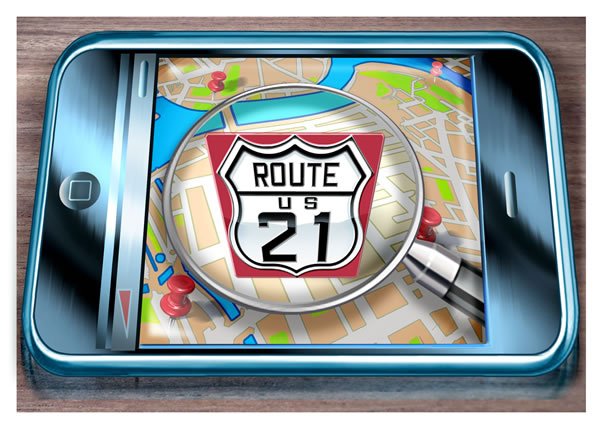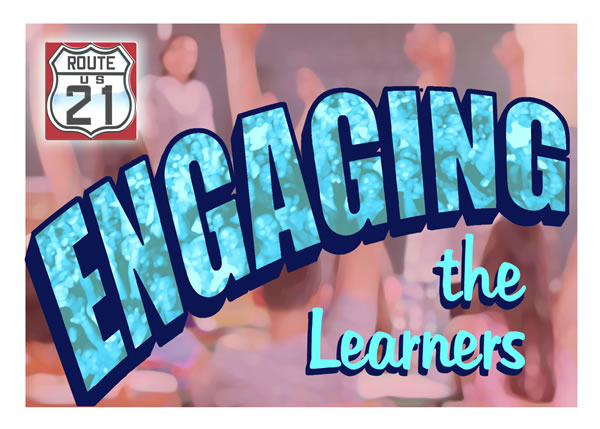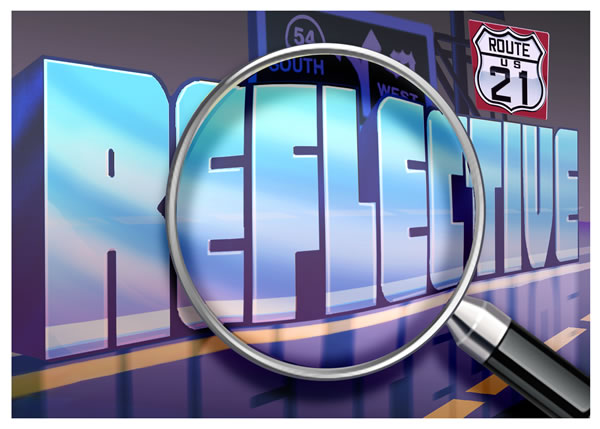Standards
The Standards with Crossroads are based on Route 21 (R21). R21 is a an observational protocol for lesson design and delivery based on current research and published best practices. Within Crossroads, educators will share and rate technology tools according to the R21 Standards. This is because lessons are the common “road” for educators to drive teaching and learning. The destination is learner success!
An Overview of the Standards
Standard 1: Community of Learners
 Each year, educators meet and greet new learners to take them on a new journey of exploration of ideas and concepts to welcome and engage them into their classes. However, preparation begins long before the first day starting with designing a supportive learning environment. Some areas explained in this standard are norms, accessibility, classroom culture, readiness, support services and learning space.
Each year, educators meet and greet new learners to take them on a new journey of exploration of ideas and concepts to welcome and engage them into their classes. However, preparation begins long before the first day starting with designing a supportive learning environment. Some areas explained in this standard are norms, accessibility, classroom culture, readiness, support services and learning space.
Standard 2: Planning for Instruction
 Understanding what to teach conceptually is one part of the lesson design equation. However, how we approach and deliver the content is another. From one class to the next, the constant variable is the learner’s needs. So, how do we design lessons to support them? It begins with a road map. This standard aligning curriculum to measurable objectives including varied strategies and approaches as well as materials.
Understanding what to teach conceptually is one part of the lesson design equation. However, how we approach and deliver the content is another. From one class to the next, the constant variable is the learner’s needs. So, how do we design lessons to support them? It begins with a road map. This standard aligning curriculum to measurable objectives including varied strategies and approaches as well as materials.
Standard 3: Building Connections
 Not all learners come to class with the same educational experiences or backgrounds. They have come down different roads. A learner who has passed the previous class/grade with an A has a wider knowledge base than one who has barely passed. How do you bridge this gap? Simply by building connections. It is the bridge taking us to new places. This standard outlines ways to access their prior knowledge and experiences to connect it to new knowledge by identifying the academic vocabulary that is critical in understanding new concepts.
Not all learners come to class with the same educational experiences or backgrounds. They have come down different roads. A learner who has passed the previous class/grade with an A has a wider knowledge base than one who has barely passed. How do you bridge this gap? Simply by building connections. It is the bridge taking us to new places. This standard outlines ways to access their prior knowledge and experiences to connect it to new knowledge by identifying the academic vocabulary that is critical in understanding new concepts.
Standard 4: Making Content Meaningful
 Now that we have identified the academic vocabulary, how do we approach making the content understandable? How do our learners learn? By teaching them the way they learn. Providing learners with authentic experiences and opportunities allows them to apply what they are learning. Each learner has their own route. This standard emphasizes how to scaffold and use other instructional strategies to provide learners ways to personally demonstrate their learning.
Now that we have identified the academic vocabulary, how do we approach making the content understandable? How do our learners learn? By teaching them the way they learn. Providing learners with authentic experiences and opportunities allows them to apply what they are learning. Each learner has their own route. This standard emphasizes how to scaffold and use other instructional strategies to provide learners ways to personally demonstrate their learning.
Standard 5: Interactions
 Learning involves interaction; a journey to be taken with friends. Interaction between the learner and the content, with other learners and the instructor. Quality lesson design plans for purposeful interaction, taking into consideration how to support learners actively through effective grouping and response strategies. This standard provides guidance for instructors in how to successfully offer frequent opportunities for learners to engage with content.
Learning involves interaction; a journey to be taken with friends. Interaction between the learner and the content, with other learners and the instructor. Quality lesson design plans for purposeful interaction, taking into consideration how to support learners actively through effective grouping and response strategies. This standard provides guidance for instructors in how to successfully offer frequent opportunities for learners to engage with content.
Standard 6: Lesson Delivery
 As educators we wear many hats. Think about the roles that you play. Do you find yourself acting as a conductor, ensuring the harmony of the learning? How about the role of coach, motivating learners to think and learn in new ways? When we deliver a lesson we have to constantly adjust our instruction to meet the needs of the learners. Check the speedometer to slow down or speed up the learning. This standard highlights the importance of varying the instructional role and pacing the lesson in a way that considers the diverse backgrounds, skill level and reactions of the learners to the instruction.
As educators we wear many hats. Think about the roles that you play. Do you find yourself acting as a conductor, ensuring the harmony of the learning? How about the role of coach, motivating learners to think and learn in new ways? When we deliver a lesson we have to constantly adjust our instruction to meet the needs of the learners. Check the speedometer to slow down or speed up the learning. This standard highlights the importance of varying the instructional role and pacing the lesson in a way that considers the diverse backgrounds, skill level and reactions of the learners to the instruction.
Standard 7: Review & Assessment
 How can we confirm what learners have learned during a lesson or what might still be unclear? How to we provide learners with feedback and clarify our instruction? Successful design and delivery of a lesson includes a variety of ways to find out what our learners know and what they can do before, during and after a lesson. Quality lessons also provide opportunities for the learners to get and give valuable feedback. Use your mirrors to adjust the learning process. This standard focuses on the value of informal and formal assessments and quality feedback to help learners reach the lesson objectives.
How can we confirm what learners have learned during a lesson or what might still be unclear? How to we provide learners with feedback and clarify our instruction? Successful design and delivery of a lesson includes a variety of ways to find out what our learners know and what they can do before, during and after a lesson. Quality lessons also provide opportunities for the learners to get and give valuable feedback. Use your mirrors to adjust the learning process. This standard focuses on the value of informal and formal assessments and quality feedback to help learners reach the lesson objectives.
Standard 8: Reflective Educator
 Critical to the continuous improvement of lesson design and delivery is the assessment of ourselves as practitioners. What worked in the delivery of the lesson? Where could we improve our practice to support the learners? Educators that reflect on their practice and seek out professional development opportunities will continue to grow. Take snapshots along the way to highlight your journey. This standard reaches across the entire lesson design and delivery process. The purpose is to encourage educators to be self-aware and to collect artifacts that demonstrate their professional development.
Critical to the continuous improvement of lesson design and delivery is the assessment of ourselves as practitioners. What worked in the delivery of the lesson? Where could we improve our practice to support the learners? Educators that reflect on their practice and seek out professional development opportunities will continue to grow. Take snapshots along the way to highlight your journey. This standard reaches across the entire lesson design and delivery process. The purpose is to encourage educators to be self-aware and to collect artifacts that demonstrate their professional development.